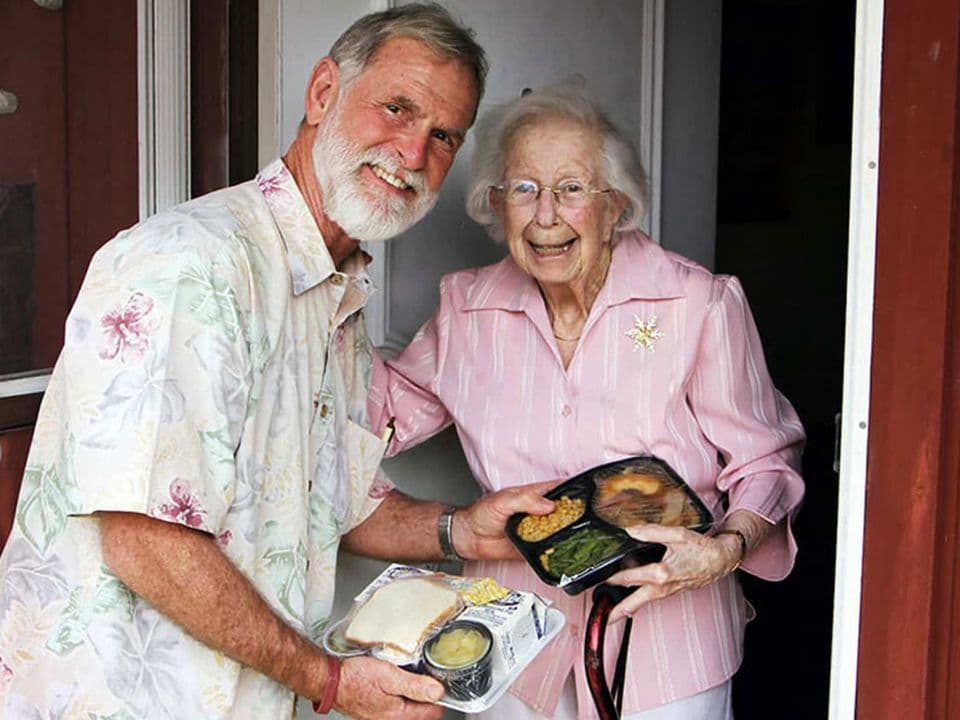Bone health guide for seniors: Risks and prevention
Learn how bone health changes with age and discover practical tips to prevent osteoporosis. Explore risk factors and learn how lifestyle changes can keep your bones strong.
Written by
Reviewed by
As we get older, many of us start to think more about our health, and one area that often gets overlooked is bone health. Bones may seem strong and unchanging, but it’s important to remember that they’re actually living tissues. Over time, bone density can decrease, which makes bones weaker and more prone to breakage. This gradual loss of bone strength may lead to osteopenia, or low bone density. If bone loss progresses, it can lead to osteoporosis, which leads to a significantly higher risk of bone fractures. Osteoporosis affects more than 10 million people in the U.S, most of whom are adults above the age of 65.
Because osteoporosis is an advanced stage of bone loss, it raises the risk of serious fractures, especially in the hip and spine. If you’re concerned about bone loss as you age, or even if you’ve had a break or fracture in the past, remember that there are things in your control. It’s important to talk to your doctor and discuss whether a bone density screening is appropriate for you. Other healthy habits can also help maintain bone strength, such as exercise and nutrition, so you can build confidence and keep doing what you love.
How bone health changes with age
Just like the rest of our body, our bones change over time. It may be helpful to consider that throughout our lives (even as children!) our bodies, including our bones, are going through a continuous process of breaking down and repairing themselves. Here’s how that process may change as we get older:
Modifiable risk factors
(Things you can change or manage through lifestyle or treatment)
- Sedentary lifestyle: Lack of regular weight-bearing activity accelerates bone loss.
- Nutritional factors: Low intake or absorption of calcium and vitamin D.
- Smoking: Increases risk of bone loss.
- Alcohol consumption: Heavy use (more than 3 drinks/day) raises osteoporosis risk.
Non-modifiable risk factors
(Things you cannot change but can monitor and plan around)
- Sex: Women are at higher risk than men.
- Hormonal changes during menopause: Lower estrogen accelerates bone loss in women.
- Bone fragility with aging: New bone forms more slowly than old bone breaks down.
- Reduced nutrient absorption: The body becomes less efficient at absorbing calcium and vitamin D with age. These are important building blocks for our bones, so this reduced absorption can negatively impact the body’s ability to build bone.
- Certain medical conditions: Some conditions common in seniors and/or extended use of certain medications can increase osteoporosis risk. Review your medical history with your healthcare provider to better understand your risk.
How to prevent bone loss
Bone density screenings
If you’re 65 and older, consider talking to your doctor about a bone density screening. A bone density test can show your bone health status, which can help you and your healthcare provider make a plan for how to manage your bone health. They are particularly recommended for women over 65 and individuals at high risk for bone loss. Medicare Part B covers a DEXA scan (popular choice for bone density screening) once every 2 years if you’re at higher risk.
Exercise for bone health
Exercise is a powerful tool for maintaining bone strength. If you have low bone density, it’s important to talk to your healthcare provider before participating in exercise independently. Different types of exercise play unique roles in protecting bone health:
Weight-bearing exercises
Weight-bearing exercises put weight on our skeleton to slow bone loss and build bone strength. These activities, such as walking, stair climbing, dancing, and hiking, involve and require you to manage your bodyweight load, which is high compared to a dumbbell or resistance band.
Strength training
Exercises where you move through a form of external resistance (hand-held weights, resistance bands, your bodyweight) can help build both muscle and bone. When your muscles pull against your bones, it signals them to get stronger. Research shows that weight lifting increases bone density and helps reduce the risk of osteoporosis. Even light weights can make a difference if used consistently. Find strength movements like squats, bicep curls, sit-to-stands, or resistance band rows in Bold’s classes.
Balance training
People with osteoporosis are more likely to experience a fracture from a fall, making the consequences of falls more severe this group. Balance training is proven to help prevent falls, so try to incorporate balance-specific exercises such as Tai Chi, dual-task training, and strength training into your routine. Learn more about how exercise improves balance.
High- vs. low-impact exercises
- High-impact exercises are movements that put higher force and stress on your joints when you land. Examples include running and jumping movements. They put more stress on bones and can help build density. If you aren’t used to high-impact exercise or already have bone density concerns, it’s important to be thoughtful when starting a high-impact exercise routine. Talk to your doctor to discuss the benefits of greater stress on the bones compared to the risk of overloading the bones and creating an unproductive stress response.
- Low-impact exercises are movements with softer, gentler landings where relatively less impact is sustained. Examples include walking, yoga, or Pilates. They are gentler on the bones, but can still help maintain bone strength.
Nutrition for bone health
While exercise is a great foundation for building bone strength, nutrition is another essential partner in maintaining bone health.
Key nutrients for strong bones
- Calcium: Adults over 50 should aim for about 1,200 mg per day through foods like milk, yogurt, leafy greens, and some plant-based milks.
- Vitamin D: Helps your body absorb calcium. Sources include sunlight, milk, some plant-based milks, and fatty fish like salmon.
- Protein: Important for muscle support, which in turn protects bones. Healthy proteins include seafood, poultry, eggs, nuts, seeds, dairy, soy products, beans, peas, and lentils.
Bone health supplements
If you can’t get enough nutrients through diet alone, supplements may help. Many older adults consider bone-strengthening supplements like calcium with vitamin D. Always check with your doctor before starting new supplements.
Other lifestyle changes
- Quit smoking: Smoking speeds up bone loss.
- Limit alcohol: More than 2–3 drinks per day may weaken bones.
Takeaways
While some factors are beyond our control, daily choices can help support your bone health. Whether you’re trying to prevent future bone loss or manage osteoporosis, the right combination of exercise for bone health and other lifestyle habits can make a big difference. Even small steps, like adding a short walk to your day, trying a gentle yoga class, or making sure you’re getting enough calcium/vitamin D, add up over time.
Remember: it’s never too late to start. Most importantly, if you have osteopenia or osteoporosis, always talk with your healthcare provider before starting or changing your routine.
Sources
- CDC
- Medicare.gov
- U.S. Department of Health and Human Services
- Nutrients
- Journal of Nutrition
- U.S. Preventive Services Task Force
- Osteoporosis International
- Best Practice & Research Clinical Rheumatology
- Mayo Clinic Proceedings
- Sports Medicine
- Maturitas
- Medicine & Science in Sports & Medicine
- Journal of Bone & Mineral Research
- Current Osteoporosis Results
- Endocrinology & Metabolism
- International Journal of Behavioral Nutrition & Physical Activity
More from Bold
Meet Dr. Mitul Desai, MD
As a double board-certified physician in Internal Medicine and Obesity Medicine, I have over 20 years of clinical experience in primary care and preventive health. Together, we will collaborate to address and prevent age-related issues with a focus o
Bold’s Move for Good Challenge
Introducing Bold's Move for Good Challenge: Take 5 classes in November and we'll donate to Meals on Wheels America.
Meet Sloane Fowkes, LCSW
I am a Licensed Clinical Social Worker with extensive experience working with the geriatric population. I use a trauma-informed and client-centered approach when working with clients on their healing journey. What to expect in our sessions together W



